Pad 0 In Sql
The pad 0 feature in SQL refers to the process of adding leading zeros to a number or string in order to achieve a desired length or formatting. This can be particularly useful when dealing with numerical values that need to be displayed in a specific format or when working with alphanumeric codes that require consistent length for sorting or comparison purposes.
How do I pad a number with leading zeros in SQL?
There are several ways to pad a number with leading zeros in SQL. Let’s explore some of the commonly used methods:
1. Using the LPAD function:
“`sql
SELECT LPAD(number_column, desired_length, ‘0’) FROM your_table;
“`
In the above query, `number_column` represents the column containing the number you want to pad, `desired_length` is the total length you want the number to be, and `’0’` is the character you want to use for padding.
2. Using the REPLICATE function:
“`sql
SELECT REPLICATE(‘0’, desired_length – LEN(number_column)) + number_column FROM your_table;
“`
In this query, `desired_length` is the desired length, `LEN(number_column)` calculates the length of the number, and `REPLICATE(‘0’, desired_length – LEN(number_column))` generates the necessary number of zeros for padding before concatenating it with the original number.
3. Using the CASE statement:
“`sql
SELECT
CASE
WHEN LEN(number_column) < desired_length THEN REPLICATE('0', desired_length - LEN(number_column)) + number_column
ELSE number_column
END
FROM your_table;
```
This query uses the CASE statement to check if the length of the number is less than the desired length. If it is, it performs the padding by concatenating zeros, otherwise it returns the original number.
What are the benefits of padding numbers with leading zeros?
Padding numbers with leading zeros can provide several benefits:
1. Consistent formatting: By padding numbers with leading zeros, you can ensure that all numbers have the same length and are properly aligned. This can enhance readability and make data easier to interpret.
2. Sorting and comparison: When working with alphanumeric codes or numerical values, padding with leading zeros allows for proper sorting and comparison. Without padding, sorting algorithms may treat numbers as strings and produce unexpected ordering results.
3. Data integrity: By enforcing a consistent length for numerical values, the risk of data inconsistency or errors can be reduced. This is particularly important when dealing with data that is imported, exported, or shared across different systems.
How to pad 0 to the left of a number in SQL using the LPAD function
The LPAD function in SQL enables you to pad 0 to the left of a number. Here's the syntax:
```sql
SELECT LPAD(number_column, desired_length, '0') FROM your_table;
```
In this query, `number_column` represents the column containing the number you want to pad, `desired_length` is the total length you want the number to be, and `'0'` is the character you want to use for padding.
For example, let's say you have a table named "employees" with a column "employee_id" containing numerical IDs, and you want to pad them with leading zeros to a length of 5:
```sql
SELECT LPAD(employee_id, 5, '0') FROM employees;
```
This query will return the "employee_id" values with leading zeros if necessary.
How to pad 0 to the left of a number in SQL using the REPLICATE function
The REPLICATE function in SQL allows you to pad 0 to the left of a number. Here's an example query:
```sql
SELECT REPLICATE('0', desired_length - LEN(number_column)) + number_column FROM your_table;
```
In this query, `desired_length` is the desired length, `LEN(number_column)` calculates the length of the number, and `REPLICATE('0', desired_length - LEN(number_column))` generates the necessary number of zeros for padding before concatenating it with the original number.
For instance, let's assume you have a table named "orders" with a column "order_number" containing numerical order numbers, and you want to pad them with leading zeros to a length of 8:
```sql
SELECT REPLICATE('0', 8 - LEN(order_number)) + order_number FROM orders;
```
This query will return the "order_number" values with leading zeros if the length is less than 8.
Using the CASE statement to pad 0 to the left of a number in SQL
If you prefer using a CASE statement, you can pad 0 to the left of a number in SQL using the following query:
```sql
SELECT
CASE
WHEN LEN(number_column) < desired_length THEN REPLICATE('0', desired_length - LEN(number_column)) + number_column
ELSE number_column
END
FROM your_table;
```
In this query, the CASE statement checks if the length of the number is less than the desired length. If it is, it performs the padding by concatenating zeros using the REPLICATE function; otherwise, it returns the original number.
For example, if you have a table named "products" with a column "product_code" containing alphanumeric codes, and you want to pad them with leading zeros to a length of 10:
```sql
SELECT
CASE
WHEN LEN(product_code) < 10 THEN REPLICATE('0', 10 - LEN(product_code)) + product_code
ELSE product_code
END
FROM products;
```
This query will return the "product_code" values with leading zeros if necessary.
How to pad 0 to the left of a number in SQL for a specific length
To pad 0 to the left of a number in SQL for a specific length, you can use the LPAD function or the CASE statement. Here are the examples for both methods:
Using LPAD function:
```sql
SELECT LPAD(number_column, desired_length, '0') FROM your_table;
```
Replace `number_column` with the column containing the number you want to pad, and `desired_length` with the specific length you want to achieve.
Using CASE statement:
```sql
SELECT
CASE
WHEN LEN(number_column) < desired_length THEN REPLICATE('0', desired_length - LEN(number_column)) + number_column
ELSE number_column
END
FROM your_table;
```
Replace `number_column` with the column containing the number you want to pad, and `desired_length` with the specific length you want to achieve.
Remember to modify `your_table` to the actual table name you are working with.
What happens if the number to be padded is already larger than the specified length?
If the number to be padded is already larger than the specified length, there won't be any padding applied. The number will remain unchanged and be returned as is.
For example, let's say you have a table named "products" with a column "product_id" containing numeric IDs, and you want to pad them with leading zeros to a length of 3. If a certain product ID is already 4 digits long, it will not be padded with zeros.
Can I pad 0 to the left of non-numeric values in SQL?
No, the padding methods discussed in this article (LPAD, REPLICATE, and CASE statement) are primarily designed for numerical values. Attempting to pad non-numeric values with leading zeros may result in errors or unexpected behavior.
Comparison of padding methods in SQL: LPAD, REPLICATE, and CASE statement
Each of the padding methods in SQL - LPAD, REPLICATE, and CASE statement - can be used to achieve the desired result of padding numbers with leading zeros. The choice of method depends on personal preference and the specific requirements of your SQL implementation.
- LPAD: The LPAD function is a concise and straightforward method for padding numbers. It takes three arguments: the number to be padded, the desired length, and the character used for padding. LPAD is supported by many database systems and is often the preferred choice when dealing with numerical values.
- REPLICATE: The REPLICATE function provides flexibility by allowing you to generate a string of any character, not just zeros. This makes it suitable for padding both numbers and non-numeric values. However, the syntax can be more verbose compared to LPAD.
- CASE statement: The CASE statement offers the most flexibility as it allows for conditional logic while padding numbers. It is useful when additional logic needs to be applied to determine whether padding is necessary or to handle different padding requirements depending on certain conditions.
When choosing among these methods, consider factors such as the database system you are working with, the complexity of the padding logic required, and the performance implications, especially when dealing with large datasets.
In conclusion, padding numbers with leading zeros in SQL is a common requirement for formatting, sorting, and data consistency purposes. Whether you prefer using the LPAD function, the REPLICATE function, or the CASE statement, there are multiple ways to achieve the desired result. Select the method that aligns with your specific needs and database system capabilities to effectively pad numbers with leading zeros.
Sql Interview Query | How To Pad Zeroes To A Number | Left
What Is Pad Function Sql?
In SQL (Structured Query Language), the PAD function is a string manipulation function used to pad a given string with a specific character to a defined length. This function helps in adjusting the length of a string to fit within a particular column or for formatting purposes. SQL provides different versions of the PAD function, such as LPAD, RPAD, and even BINARY_PAD.
Understanding the Different Types of PAD Functions:
1. LPAD:
The LPAD function in SQL is used to pad a string with a specified character on the left side until the desired length is achieved. This is particularly useful when aligning strings to the left. The syntax for the LPAD function is as follows:
“`sql
LPAD(string, length, pad_character)
“`
Where:
– string: The original string to be padded.
– length: The desired length of the final string.
– pad_character: The character to be used for padding.
2. RPAD:
The RPAD function works similarly to the LPAD function but appends the padding characters on the right side of the string until the desired length is reached. This is useful for aligning strings to the right. The syntax for the RPAD function is as follows:
“`sql
RPAD(string, length, pad_character)
“`
Where:
– string: The original string to be padded.
– length: The desired length of the final string.
– pad_character: The character to be used for padding.
3. BINARY_PAD:
The BINARY_PAD function is another variant of the PAD function but specifically designed to manipulate binary strings. It is mainly used for padding binary data, such as BLOB (Binary Large Object) types. The syntax for the BINARY_PAD function is as follows:
“`sql
BINARY_PAD(string, length, pad_character)
“`
Where:
– string: The original string/blob to be padded.
– length: The desired length of the final string.
– pad_character: The character to be used for padding.
Common Use Cases of PAD Function in SQL:
The PAD function in SQL finds its usage in various scenarios, including but not limited to:
1. Formatting and alignment: By using the LPAD or RPAD functions, it is possible to format and align strings to a specific length, ensuring consistency and visual appeal in the output. For instance, if there is a requirement to display employee IDs as five-digit numbers, the PAD function can pad the IDs with leading zeroes using LPAD.
2. Column value adjustment: When inserting or updating data, SQL developers may need to ensure that the values being stored in a particular column have a predefined length. The PAD function assists in adjusting the length of the value to meet the requirements defined by column length constraints.
3. Data masking: In certain situations, sensitive data needs to be masked or obfuscated to safeguard privacy. By using the PAD function, it is possible to pad the actual data with random characters, thereby preventing unauthorized access or inference from the length of the original information.
Frequently Asked Questions (FAQs):
Q1. Can the PAD function be used with a dynamic length?
Yes, the length parameter in the PAD function can be replaced with a dynamic value, such as a variable or an expression, as long as it evaluates to a valid integer.
Q2. Which characters can be used for padding?
Any character can be used as a padding character. Common choices include spaces, zeros, or even specific symbols, depending on the desired output format.
Q3. Is there a maximum limit on the length parameter?
In most SQL implementations, the maximum limit for the length parameter in the PAD function is determined by the maximum length allowed for a string or blob data type. It is important to consider the storage requirements and limitations while choosing the length value.
Q4. Can the PAD function be used with non-string data types?
Yes, the PAD function can be used with non-string data types, but the input values will be implicitly converted to strings before padding. It is necessary to handle the data type conversion based on the specific SQL implementation.
Q5. How does the PAD function handle cases where the original string is already longer than the desired length?
In such cases, no truncation or removal of characters occurs. The PAD function simply returns the original string without any modifications.
Q6. Is it possible to use the PAD function to trim excess characters?
No, the PAD function is designed to add or pad characters to a string, not to remove or trim excess characters. To trim a string, other functions like TRIM or SUBSTRING need to be used.
Q7. Can the PAD function be used across different database systems?
Yes, the PAD function is a popular and widely supported SQL function, and it is available in most major database systems, including Oracle, MySQL, SQL Server, PostgreSQL, etc. However, it is always recommended to refer to the specific documentation for each database system to ensure compatibility.
Conclusion:
The PAD function in SQL, through its variants such as LPAD, RPAD, and BINARY_PAD, offers convenient ways to modify the length and formatting of strings. Whether it is for aligning data, adjusting column values, or data masking, the PAD function proves to be a valuable tool for SQL developers. Understanding its syntax, usage scenarios, and potential limitations allows SQL developers to efficiently manipulate and format strings within their databases.
How To Use Pad In Sql?
SQL (Structured Query Language) is a powerful programming language used to manage and manipulate relational databases. One of the many functions available in SQL is PAD, which can be used to control the formatting of string values. In this article, we will explore the various aspects of using PAD in SQL and provide a comprehensive guide on how to utilize this function effectively.
Understanding PAD Function in SQL
The PAD function in SQL is primarily used to add padding characters to a string value. This can be helpful when you need to format your data in a specific way, such as aligning text or numbers in a column. The syntax for using the PAD function is as follows:
PAD(string, length, padding_character)
Here, “string” is the input value that needs padding, “length” specifies the desired length of the resulting string (including the original string itself), and “padding_character” is the character to be used for padding. It is important to note that the padding character must be a single character.
Using PAD Function with Examples
Let’s delve into some practical examples to understand how to use the PAD function effectively:
Example 1: Adding Leading Zeros
Suppose you have a table with a column named “CustomerID” which contains alphanumeric values. You need to add leading zeros to make all values in the “CustomerID” column 8 characters long. Here’s how you can achieve this:
SELECT PAD(CustomerID, 8, ‘0’)
FROM Customers;
This query will pad each value in the “CustomerID” column with leading zeros to form an 8-character string. For instance, if the original value is “AB123”, the resulting value will be “000AB123”.
Example 2: Aligning Text
Let’s say you have a table with a column named “Name” and you want to display all the names left-aligned within a column of width 20. Here’s how you can do it:
SELECT PAD(Name, 20, ‘ ‘)
FROM Employees;
By specifying a length of 20 and using the space character as padding, the PAD function will align all the names to the left within a 20-character wide column.
Example 3: Padding with Custom Characters
You can also use custom characters for padding in SQL. For instance, if you have a column named “ProductCode” and you want to append asterisks (*) to make all values 10 characters long, you can use the following query:
SELECT PAD(ProductCode, 10, ‘*’)
FROM Products;
This SQL query will pad the “ProductCode” with asterisks, resulting in 10-character-long strings.
Frequently Asked Questions (FAQs):
Q: Can I pad a string only on the right side?
A: Yes, you can pad a string on either the left, right, or both sides. To pad on the right side, use the RPAD function instead of PAD.
Q: Are there any limitations on the length of the input string?
A: No, there are no limitations on the length of the initial string. However, you should consider the maximum column width or space available when specifying the desired length.
Q: How can I remove the added padding characters?
A: To remove the padding characters, you can use the TRIM or RTRIM (for right padding) functions provided by SQL.
Q: What happens if the padding character is not specified?
A: If you omit the padding character, SQL will automatically use a space character as the default padding character.
Q: Can I nest the PAD function within another function?
A: Yes, you can use the PAD function as an input for other SQL functions or expressions, enabling you to combine the functionality of multiple functions effectively.
Q: Does the PAD function alter the original data in the table?
A: No, the PAD function does not modify the actual data in the table. It only affects how the data is presented in the result set.
In summary, the PAD function in SQL allows you to add padding characters to a string, enabling you to control the formatting of your data. By understanding the syntax and implementing practical examples, you can effectively utilize the PAD function to meet your specific formatting requirements in SQL.
Keywords searched by users: pad 0 in sql Add 0 before number in SQL, SQL pad left 0, Add 0 to month sql, Remove 0 before number sql, Sql int leading zero, PadLeft SQL, Pad right in sql, Pad in SQL
Categories: Top 77 Pad 0 In Sql
See more here: nhanvietluanvan.com
Add 0 Before Number In Sql
In SQL, there are times when you may encounter situations where you need to add a leading zero to a number. This can be particularly important when dealing with numerical data that needs to be formatted or displayed in a specific way. Luckily, SQL provides several methods to accomplish this task effectively. In this article, we will explore the different techniques you can utilize to add a leading zero before a number in SQL, along with some frequently asked questions related to this topic.
Adding a leading zero to a number is a common requirement, especially when dealing with numerical data that may have a fixed length or specific formatting requirements. Here are a few methods you can use to achieve this in SQL:
1. Using CONCAT and LPAD functions:
One popular approach is to utilize the CONCAT and LPAD functions together. The CONCAT function is used to combine strings, and the LPAD function pads the given string with a specific character (in this case, a zero) to a specified width. Here’s an example that demonstrates this approach:
“`
SELECT CONCAT(‘0’, LPAD(column_name, 5, ‘0’)) AS formatted_number
FROM table_name;
“`
In this example, ‘column_name’ refers to the column in your table that needs the leading zero. ‘5’ represents the desired total width of the resulting string (including the leading zeros), and ‘formatted_number’ is the alias for the final output.
2. Utilizing the FORMAT function:
Another technique is to use the FORMAT function, which allows you to format a number with specific patterns. In this case, the pattern will include the leading zero. Here’s an example:
“`
SELECT FORMAT(column_name, ‘00000’) AS formatted_number
FROM table_name;
“`
This approach formats the ‘column_name’ with the pattern ‘00000’, which means it will have at least five digits, with leading zeros if necessary. The result is returned as ‘formatted_number’, which can be customized to your specific requirements.
3. Employing the RIGHT and REPLICATE functions:
The RIGHT function is used to extract a specific number of characters from the right side of a string, and the REPLICATE function repeats a specified character or string. Here’s an example showcasing this method:
“`
SELECT RIGHT(REPLICATE(‘0’, desired_length) + column_name, desired_length) AS formatted_number
FROM table_name;
“`
Replace ‘desired_length’ with the desired total length of the resulting string (including the leading zeros). ‘column_name’ is the column you want to format, and ‘formatted_number’ is the alias for the output.
Frequently Asked Questions (FAQs):
Q: Can I use these methods to add leading zeros to a non-numeric column?
A: No, these methods are primarily designed for numeric columns. If you want to add leading zeros to a non-numeric column, you would need to convert it to a numeric type first and then apply one of the above methods.
Q: Can I incorporate these techniques in an UPDATE statement to modify the data in the table directly?
A: Absolutely! By altering the SELECT statement to an UPDATE statement and providing the appropriate table name and column, you can directly modify the data in the table with the formatted version.
Q: Is there a limit to the number of leading zeros I can add?
A: There is no inherent limit to the number of leading zeros you can add. The limit is dictated only by the maximum width supported by the data type you are using.
Q: Are these methods specific to a particular SQL database system?
A: These methods are widely applicable across different SQL database systems, including MySQL, PostgreSQL, SQL Server, and Oracle. However, syntax variations may exist, so be sure to consult the documentation of the specific database system you are using.
Q: Can I combine multiple SQL methods to achieve my desired formatting?
A: Yes, you can certainly combine multiple methods to achieve your desired formatting. For example, you can use CONCAT and LPAD together or use a combination of RIGHT, REPLICATE, and LPAD based on your requirements.
Adding a leading zero before a number in SQL is a useful operation when working with numerical data that requires specific formatting or display requirements. By utilizing the CONCAT and LPAD functions, the FORMAT function, or the RIGHT and REPLICATE functions, you can easily achieve this formatting in your SQL queries. Remember to choose the method that best suits your needs and adapt it to the specific database system you are using.
Sql Pad Left 0
When working with SQL, it is often required to format or pad numeric values with leading zeros for a variety of reasons. One commonly used technique to achieve this is by utilizing the “Pad Left 0” function within SQL. In this article, we will delve into the details of SQL Pad Left 0, explaining its purpose, syntax, and usage scenarios. Additionally, a section of frequently asked questions will be provided to address any lingering queries.
Overview of SQL Pad Left 0:
SQL Pad Left 0 is a string function that allows users to add leading zeros to numeric values in a query result. This function is especially useful when numbers need to be presented uniformly, or when leading zeros are necessary for proper sorting or formatting purposes. By appending zeroes to the left of a number, SQL Pad Left 0 ensures that the resulting string representation maintains a consistent width.
Syntax of SQL Pad Left 0:
The syntax for SQL Pad Left 0 is as follows:
“`sql
SELECT LPAD(column_name, total_width, padding_character)
FROM table_name;
“`
Explanation:
– `column_name`: The name of the column or expression containing the numeric values that need to be padded.
– `total_width`: Denotes the desired width of the resulting string, including the original number and any leading zeros.
– `padding_character`: Specifies the character to be used for padding. Typically, this is a zero, but other characters can be used if needed.
Usage Scenarios of SQL Pad Left 0:
1. Pad Left 0 for Uniform Length:
Consider a scenario where a table contains employee IDs. These IDs are numeric, but for consistency and readability purposes, they need to be presented as fixed-length strings. Using SQL Pad Left 0, the IDs can be padded with leading zeros to ensure uniformity.
“`sql
SELECT LPAD(employee_id, 5, ‘0’) AS padded_id
FROM employees;
“`
2. Sorting Numbers with Padded Zeros:
When alphanumeric data is stored in a database, sorting can become problematic if numbers are not of the same length. To address this, SQL Pad Left 0 can be used to add leading zeros to numbers, allowing correct numerical ordering while preserving the original value.
“`sql
SELECT LPAD(product_code, 8, ‘0’) AS padded_code
FROM products
ORDER BY padded_code;
“`
FAQs:
Q1. What is the maximum width that can be specified in SQL Pad Left 0?
A1. The maximum width can vary depending on the database system you are using. However, in most commonly used databases like MySQL, Oracle, and SQL Server, a width of up to 4000 can be specified.
Q2. Can SQL Pad Left 0 be used with non-numeric values?
A2. No, SQL Pad Left 0 is specifically designed for numeric values. Attempting to use it with non-numeric columns or expressions will result in an error.
Q3. Is there an alternative way to achieve the same functionality as SQL Pad Left 0?
A3. Yes, there are alternative techniques depending on the database system. For instance, in MySQL, you can use the `LPAD()` function, whereas Oracle provides the `LPAD()` and `RPAD()` functions.
Q4. Can SQL Pad Left 0 be used to pad with characters other than zeros?
A4. Absolutely! While the default behavior is to pad with zeros, SQL Pad Left 0 allows you to use any character of your choice by specifying it as the `padding_character` argument.
Q5. Can SQL Pad Left 0 be used to pad numbers with varying widths?
A5. Yes, SQL Pad Left 0 can handle numbers of varying widths. By specifying a sufficiently large `total_width`, the function will ensure that even the shortest number receives a fixed-length treatment, with appropriate leading zeros.
In conclusion, SQL Pad Left 0 is a valuable tool used to format and pad numeric values in SQL queries. By enabling users to add leading zeros, it ensures consistent width and facilitates tasks such as uniform presentation, sorting, and formatting. Understanding its syntax, as well as its potential applications, allows database professionals to utilize this function effectively and solve a range of common challenges related to numeric data manipulation.
Add 0 To Month Sql
SQL, or Structured Query Language, is a widely used programming language designed for managing both structured and unstructured data. It provides a powerful set of tools for storing, manipulating, and retrieving data from relational databases. When dealing with date values in SQL, it is crucial to ensure consistency and accuracy in their representation. One common scenario that often arises is the need to add a leading zero to the month component of a date. In this article, we will explore various ways to accomplish this task effectively and efficiently.
The month component in a date value is typically represented by a number ranging from 1 to 12. However, it is considered a best practice to include a leading zero for months from 1 to 9 to maintain a consistent and organized format. This helps avoid any ambiguity when sorting or comparing date values. For instance, without the leading zero, a date such as “1/8/2023” might be interpreted as January 8th instead of August 1st.
There are several approaches to achieve the desired result of adding a leading zero to the month component in SQL. Let’s explore a few of them below:
1. Using the LPAD Function:
LPAD (Left Pad) is a widely supported function in many SQL database systems. It is used to pad a string value with a specified character, such as zero, to a certain length. To add a leading zero to the month, we can convert the month value to a string and pad it on the left with zero. For example:
“`sql
SELECT LPAD(MONTH(date_column), 2, ‘0’) AS formatted_month FROM table_name;
“`
This query converts the month value, obtained from the `date_column`, to a string and adds a leading zero if necessary. The `2` parameter specifies the desired length of the resulting string, ensuring a consistent width for month representation.
2. Using the FORMAT Function:
The FORMAT function is available in certain SQL database systems, such as Microsoft SQL Server. It provides a flexible way to format date values according to specific patterns. To add a leading zero to the month, we can use the following syntax:
“`sql
SELECT FORMAT(date_column, ‘MM’) AS formatted_month FROM table_name;
“`
The `’MM’` pattern specifies that the month component should be formatted with leading zeros. This approach simplifies the code and eliminates the need for explicit data type conversions.
3. Using the CONCAT Function:
The CONCAT function is commonly supported in various SQL database systems and is used to concatenate two or more strings. In the case of adding a leading zero to the month, we can convert the month value to a string and concatenate it with a zero as follows:
“`sql
SELECT CONCAT(‘0’, MONTH(date_column)) AS formatted_month FROM table_name;
“`
This query converts the month value to a string and concatenates it with a zero using the CONCAT function. It ensures that a leading zero is added to the resulting string, presenting a consistent format for the month component.
FAQs:
Q1. Are there any performance implications of adding a leading zero to the month in SQL?
While adding a leading zero to the month component in SQL has negligible performance implications, the impact may vary depending on the database system and the volume of data being processed. Generally, the performance impact is insignificant, and the benefits of consistent date representations outweigh any minor overhead.
Q2. Can I update the data directly in the database to add a leading zero to the month?
Yes, it is possible to update the existing data in the database to add a leading zero to the month component. You can use an SQL UPDATE statement targeting the specific column holding the date values and apply the desired transformation. However, exercise caution and ensure you have a proper backup of the data before performing any updates directly in the database.
Q3. What other date formatting options are available in SQL?
SQL provides a wide range of date formatting options, allowing developers to format dates according to their specific requirements. Some commonly used formatting patterns include:
– ‘YYYY-MM-DD’ (e.g., 2023-08-01) for a date in ISO 8601 format.
– ‘DD-MON-YYYY’ (e.g., 01-AUG-2023) for a date with a three-letter abbreviated month.
– ‘DD/MM/YYYY’ (e.g., 01/08/2023) for a date with slashes as separators.
In conclusion, ensuring consistency and accuracy in date representations is paramount when dealing with date values in SQL. Adding a leading zero to the month component can greatly contribute to achieving this goal. The approaches discussed above offer various methods to accomplish this task effectively and efficiently. By adopting these methods, developers can navigate date-related challenges with ease and maintain a well-structured database environment.
Images related to the topic pad 0 in sql

Found 23 images related to pad 0 in sql theme

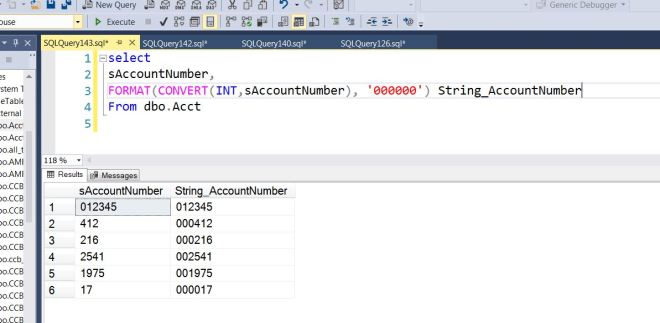

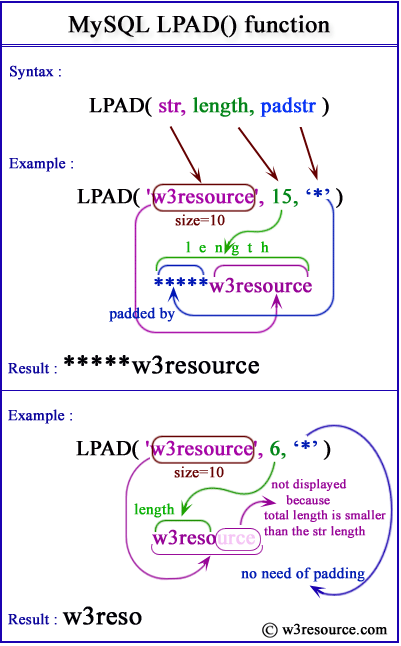



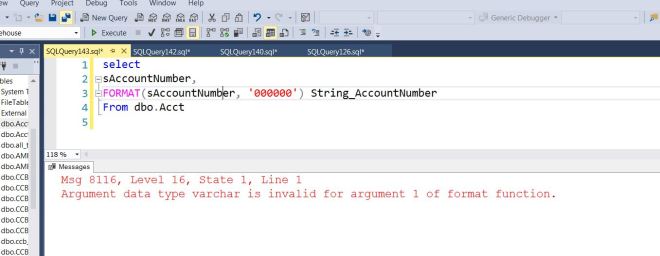



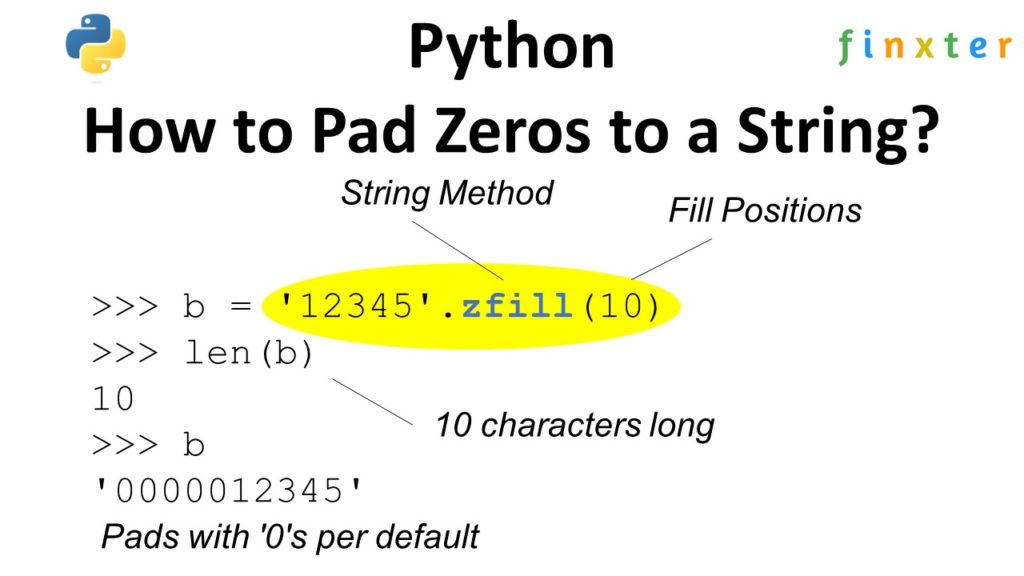


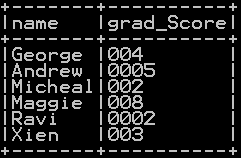
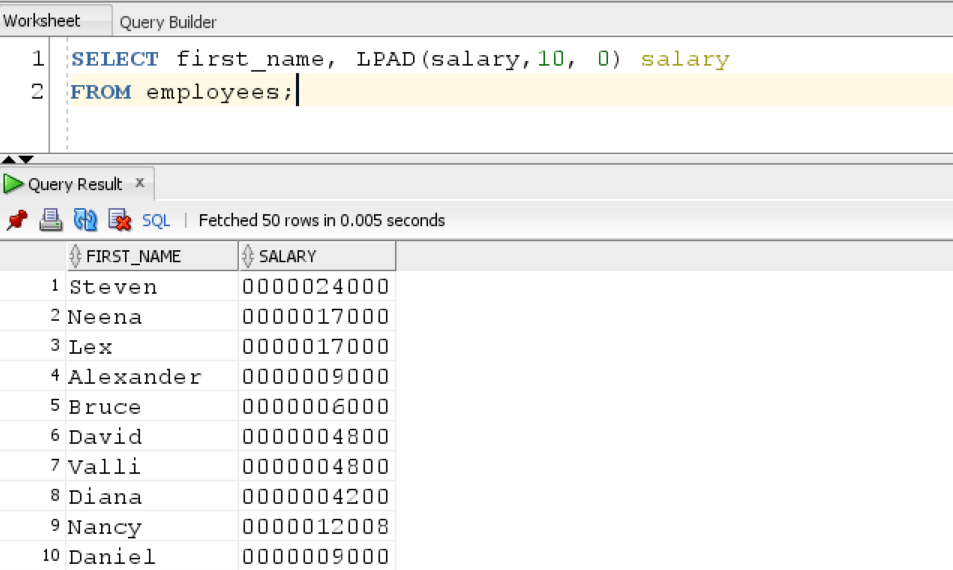

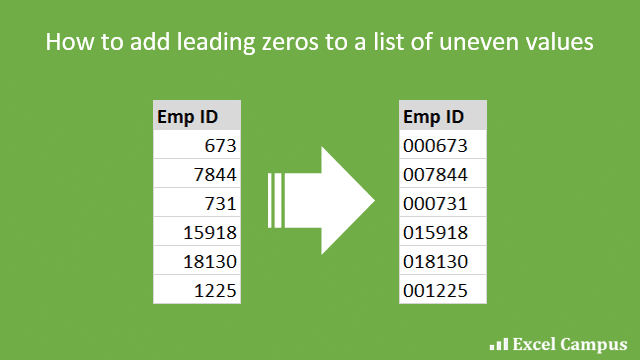








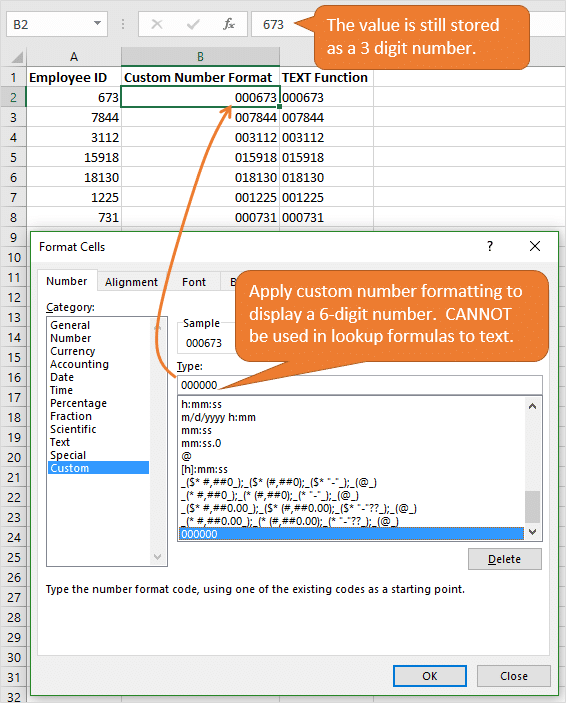
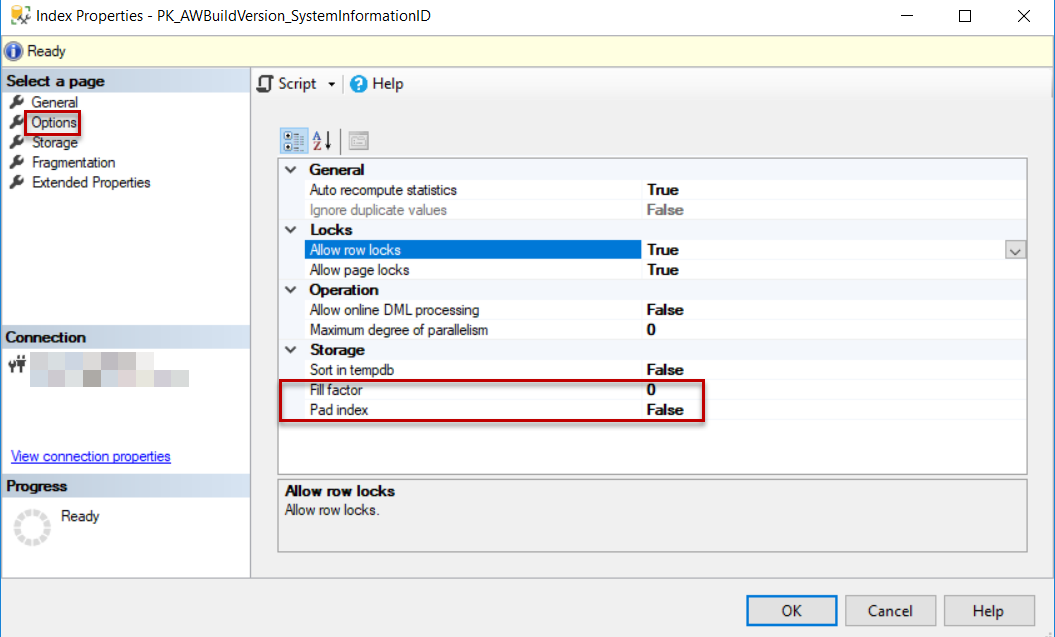

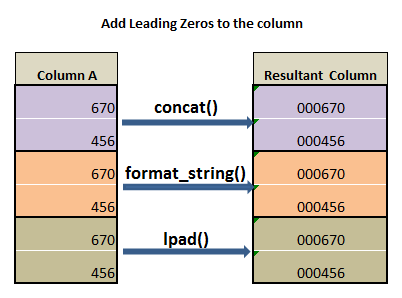



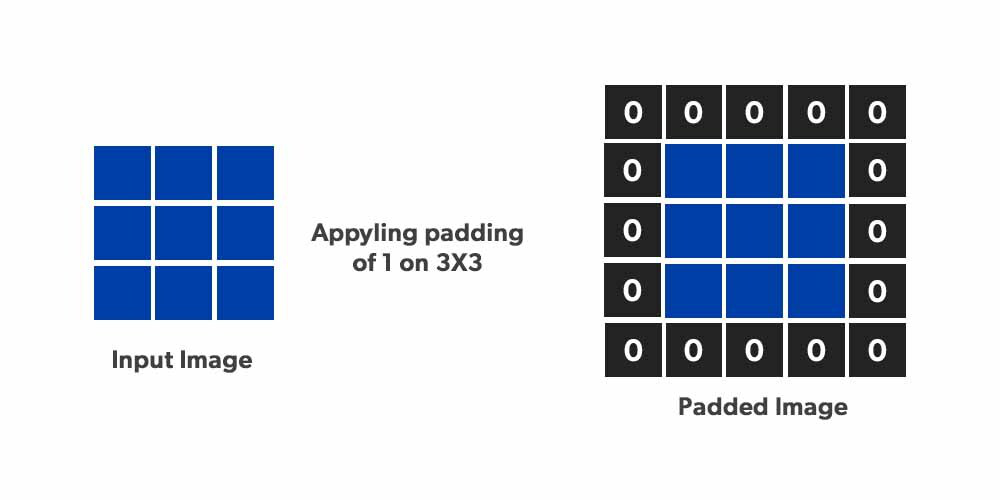
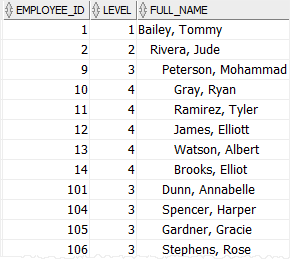

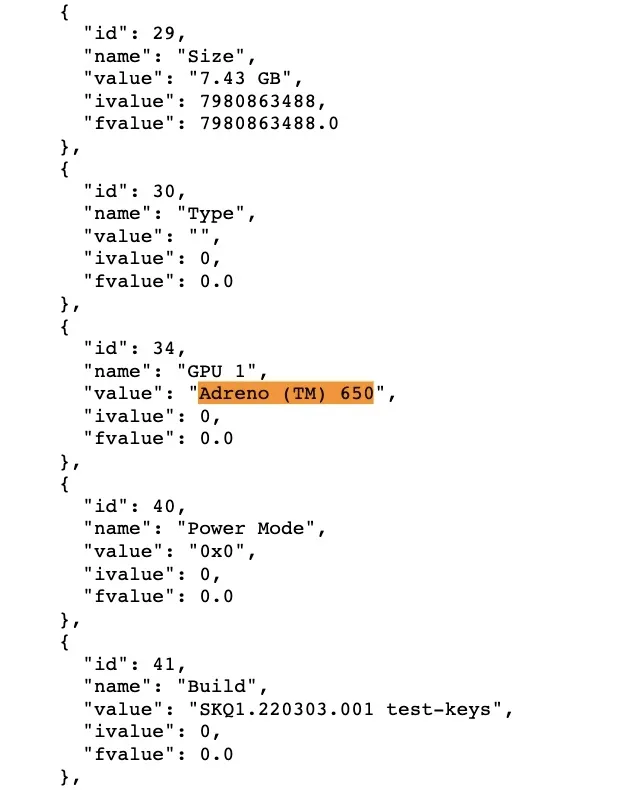


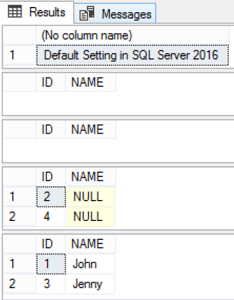

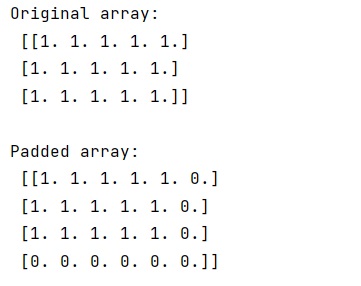





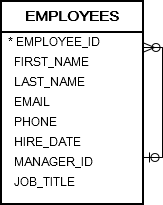


Article link: pad 0 in sql.
Learn more about the topic pad 0 in sql.
- Pad a string with leading zeros so it’s 3 characters long in SQL …
- SQL Tutorial – SQL Pad Leading Zeros – Kodyaz.com
- LPAD in SQL – Scaler Topics
- LPAD() Function in MySQL – GeeksforGeeks
- SQL LPAD() – Database.Guide
- Add padding, trimming, and encoding attributes – IBM
- Zero pad a string – Jim Salasek’s SQL Server Blog
- MySQL LPAD() Function – W3Schools
- SQL Server Zero Pad Left | SQLServer.info
- Formatting number to add leading zeros in SQL Server
- Add leading zeros to number in SQL Server – Dotnet Learners
- Oracle SQL for padding leading zeros – Burleson Consulting
See more: https://nhanvietluanvan.com/luat-hoc/